Nissan Driving Itself Into Future
By John Gilbert
NEWPORT COAST, CALIF. — One of the more common questions consumers ask automotive journalists is that, given the impressive expansion of innovative driving controls on contemporary cars, how long will it be before we have cars that will drive themselves?
That answer is a lot sooner than any of us might have expected, based on a visit to Nissan 360, a complete introduction to all the new cars and trucks that will be coming out for 2014 in all 170 countries of the world where Nissan sells vehicles. The show started in late August and lasts into September of 2013 to attract waves of auto journalists from all over the world, as a celebration by the Japanese company for its 80th anniversary of building cars.
Few vehicles in those 80 years compares to the Leaf, Nissan’s all-electric subcompact, which has now sold 74,000 units worldwide to become the top-selling electric vehicle (EV) in the world. But no other Leaf can compare to the model I climbed into on the “Autonomous Driving” course, designed as part of a revised layout at the abandoned El Toro airbase.
When it comes to drives-itself vehicles, there are models from Lexus and Ford and Lincoln that will parallel park themselves in no-touch fashion. But Nissan goes well beyond that with the autonomous Leaf. I was instructed to climb into the passenger seat by a polite Japanese engineer, who sent one of his young associates to sit in the driver’s street, but to carefully fold his arms to avoid touching any controls or pedals. Another engineer was in the back seat. The engineer himself stood off to our right, as we were positioned on the right side of two parallel rows of parked cars, simulating a shopping center parking lot, with cars filling all available slots.
Our man clicked the key fob, and — no-touch — we were moving forward, then turning left to drive down between the two double lanes of parked cars. As we slowly moved along, a driver pulled an SUV out of a slot on our left and drove away. We approached and passed that slot, as our Leaf pulled wide to the right, then it deliberately backed up in a smooth arc, backing perfectly into the opened slot and stopping perfectly.
I suggested that if you lived in an apartment building with a similar parking lot, you could stop at the door, grab your computer bag and a couple bags of groceries, and go inside, pausing to click the fob — and sending the Leaf away for find an open parking slot and park itself. He said that would be easily possible. Not bad for wintertime.
When the fob was clicked again, from 200 feet away, our Leaf left the parking slot and circled around to the left, arriving on a larger road-course for another test. Away we went, making the curve and heading back along the left of a row of parked cars. A motorized image of a person suddenly zipped out from between two of the parked cars, right into our path. It was too close for braking, but without hesitation the Leaf swerved to the left, around the wayward pedestrian, then veered back into our lane and continued on.Very impressive. Nissan long has been a leader in sophisticated navigation systems, with its radar, sonar, laser-guided devices, and cameras, all integrated to provide novel views of all surrounding areas of your car, as if seen from a device located above the vehicle. If you imagine all those devices, plus the active cruise control that allows the cars to slow down or accelerate to a preset speed to maintain the same interval with the vehicle ahead, you might grasp some of the technology that makes the autonomous Leaf drive itself.
“We believe that by 2020, all vehicles will use some form of electrification,” said Carla Bailo, a senior vice president for R & D of the Americas. “The Leaf is the best-selling EV in the industry, and we will bring five more new EVs to market by 2020.”
Takao Asami, senior vice president of research, said that the three primary factors of driving are recognizing surroundings, judgment of how to cope with those surroundings, and action to carry out those judgments. “Our autonomous vehicle recognizes these three things like a driver would,” he said.
The full-size Titan pickup truck continues to be alive and well, and it’s being readied for complete renovation, for what I’d speculate would be the 2015 model year. That will be about when all the development is completed for its slick new Cummins 5.0-liter turbo-diesel V8. There are bigger pickups with larger diesel engines, and the Ram is slated to come out with a light diesel from Fiat for 2014, but this will be the first medium-duty V8 turbo-diesel in a half-ton pickup.
“Everyone likes to brag about towing 19,000 pounds, but the truth is, most pickup owners tow about 5,000-8,000 pounds,” said Rich Miller, global manager for large pickups and SUVs. “If the power required is a bell curve, the question is how much power is needed for the center of the bell curve. The new Cummins V8 will have over 300 horsepower and about 550 foot-pounds of torque, which will give it about the same horsepower as our 5.6 gas V8 and a lot more torque. I test-drove the new truck in the mountains near Phoenix, when it was about 107 degrees, and I gave it high marks for power and fuel economy.”
Cummins took on the EPA’s challenge for clean-emission running with a turbo-diesel, and they needed a partner. Nissan was quick to sign on, and finalized the arrangement earlier this summer.
Another impressive item in the Nissan arsenal is a new alignment with Mercedes. Having worked well in its partnership with Renault, Nissan will next share a Mercedes platform and a pair of engines from Mercedes for a new compact luxury sedan. One engine will be a small 4-cylinder turbo-diesel, designed by Mercedes and built in Nissan’s Tennessee plant, specifically for powering the compact Infiniti aimed at Europe. It’s likely we’ll get the car with the gas engine in the U.S.
Another vehicle not shown at Nissan 360 is the 2014 Nissan Rogue. The extremely efficient and popular compact crossover SUV has lived for about eight years without any major change. Bailo said the new Rogue will improve on the popular Rogue in every way.
If that was futuristic, Nissan certainly hasn’t forgotten its roots. Nissan laid down the basis for comparison by displaying various vintage cars at the Resort at Pelican Hill, a spectacular golf club and resort located a long, and possibly wind-aided wedge shot from the Pacific Ocean. The display kicked off with a 1935 Datsun 14 roadster, with a 0.7-liter engine, then moved on. A 1947 TAMA electric car was parked alongside Japanese classics such as the 1961 Fairlady 1200 Roadster, the 1964 Skyline 2000GT, and the 1971 Datsun 510 BRE No. 46 — a race car driven to the 1971 and 1972 SCCA Under 2.5-liter Trans-Am championships by John Morton. In fact, I wrote many stories about the duels between Morton and Horst Kwech’s Alfa Romeo in the U-2.5 series that featured some of the best racing imaginable.
But as captivating as that display was, nothing could compare to the scene at the El Toro airbase, which was converted into a series of test tracks by Nissan for test-drives of all their vehicles — a couple hundred that included some right-hand drive cars for other countries. While there were a lot of dazzling models, including the sleek prototype Infiniti EMERG-E sports car, some highlights were:
- The NV200 New York City Taxi — a Yellow Cab built perfectly into the new short but tall truck, with enormous space in the rear seating area, separated by a form-fitting transparent plastic window from the driver, and with all sorts of gadget switches and drink-storage spots. They are going into play, soon.
- Nissan Juke Diesel — The little sporty vehicle is very good in basic form, or in NISMO sporty upgrade, around the Discovery Street Drive course. It might make the most sense when powered by a potent little turbos-diesel from Renault, which is Nissan’s global partner.
- Pathfinder Hybrid — Having just driven a loaded Nissan Pathfinder for a week, and attaining up to 28 miles per gallon with the 3.5-liter V6, what could be better than to increase the fuel economy potential by adding a hybrid battery pack to the gas engine?
- Infiniti Q50, both in regular gas-powered 3.7-liter V6 and in hybrid form, is a good-looking addition to Nissan’s luxury Infiniti lineup. Around an autocross course, the hybrid model wanted to respond and fly at the touch of the gas pedal.
- The iconic “Z-Car” is better than ever, in 370Z coupe and roadster form, and particularly in NISMO upgraded stance, with hotter engine, firmer suspension and all-out performance driving feel around the tight turns of the autocross Performance course.
- Nissan Titan, Armada, Frontier, Xterra, and Patrol — On the various segments of the Adventure course, we were able to sample all of these SUV and trucks. First we drove the Patrol up a steep grade, and tried the instant-response hill-descent control going down; the midsize Frontier crew cab was next, willing to tip wide left and wide right as though about to scrape off the door handles before righting itself; the Armada allowed intricate off-roading in a large-SUV size; the Xterra readily plunged into a bin filled with 24 inches of water, and easily drove through it leaving only a small wake — with no leakage; the Titan half-ton pickup was hooked up to a trailer that included 19,000 pounds of potential tail-wagging, but with nary a wag.
- Datsun Go — Yes, decades after Datsun made the controversial name to drop its name for the corporate Nissan, the company is now bringing back the name Datsun, and will make some small, subcompact Datsun models for smaller countries, such as Thailand, China and Japan, so it might take a while for the Datsun name to reappear in the U.S.
I never got over to the large delivery trucks, nor did I get to drive the sizzling hot Nissan GT-R or GT3. It was enjoyable to catch up on some Nissan legends. One is that three executives in early Nissan days were named Den, Aoyama, and Takauchi, and put the first letters together and get “DAT,” which made it easy when the first of their sons came to the company, and they could call it “Datsun.”
And even better story is that the curiosity I had for the first truly sleek sports car from Datsun was the “Fairlady,” which struck me as a peculiar name. Someone said that a Nissan executive was so smitten by the play/movie “My Fair Lady” that he named the sports car “Fairlady” after the show. That’s one of those that could be disproven by facts, but the story is so good it deserves its place as a legend, regardless.
Comments
Tell me what you're thinking...
and oh, if you want a pic to show with your comment, go get a gravatar!


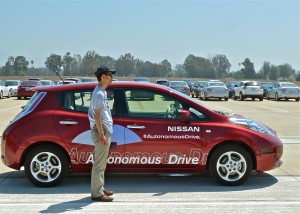
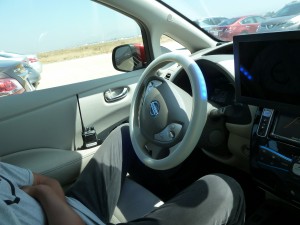

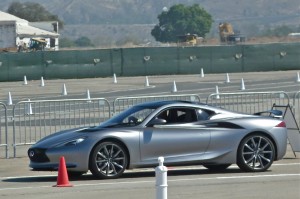
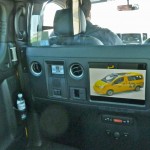
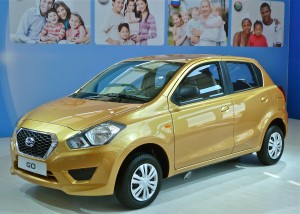
 John Gilbert is a lifetime Minnesotan and career journalist, specializing in cars and sports during and since spending 30 years at the Minneapolis Tribune, now the Star Tribune. More recently, he has continued translating the high-tech world of autos and sharing his passionate insights as a freelance writer/photographer/broadcaster. A member of the prestigious North American Car and Truck of the Year jury since 1993. John can be heard Monday-Friday from 9-11am on 610 KDAL(www.kdal610.com) on the "John Gilbert Show," and writes a column in the Duluth Reader.
John Gilbert is a lifetime Minnesotan and career journalist, specializing in cars and sports during and since spending 30 years at the Minneapolis Tribune, now the Star Tribune. More recently, he has continued translating the high-tech world of autos and sharing his passionate insights as a freelance writer/photographer/broadcaster. A member of the prestigious North American Car and Truck of the Year jury since 1993. John can be heard Monday-Friday from 9-11am on 610 KDAL(www.kdal610.com) on the "John Gilbert Show," and writes a column in the Duluth Reader.